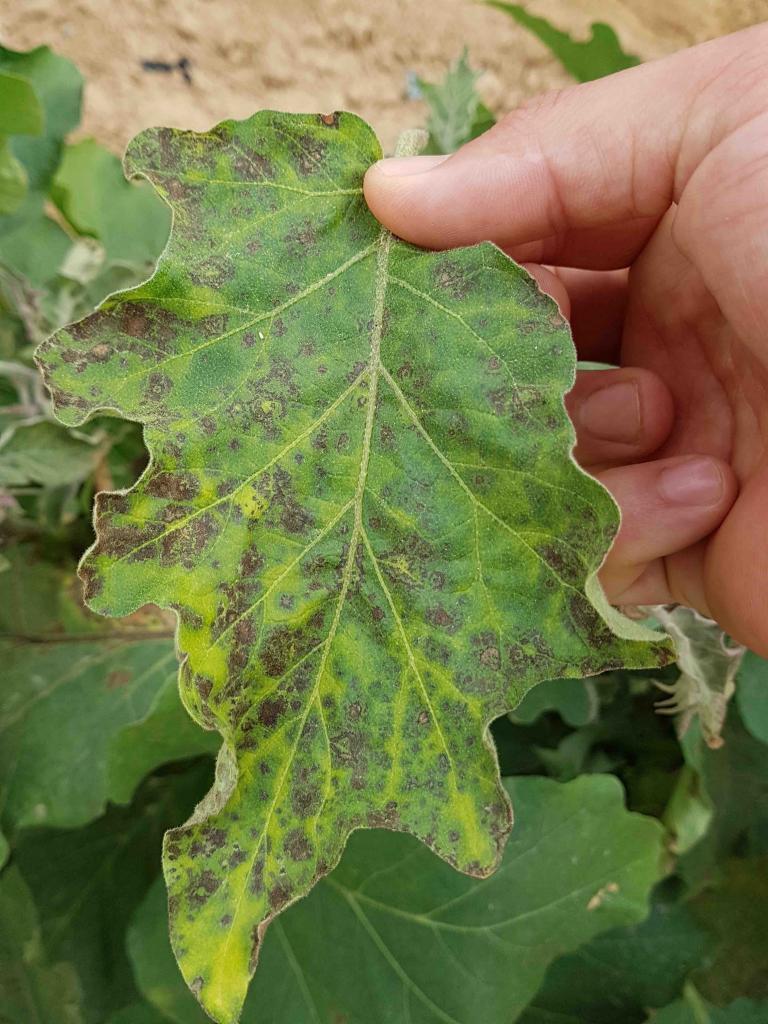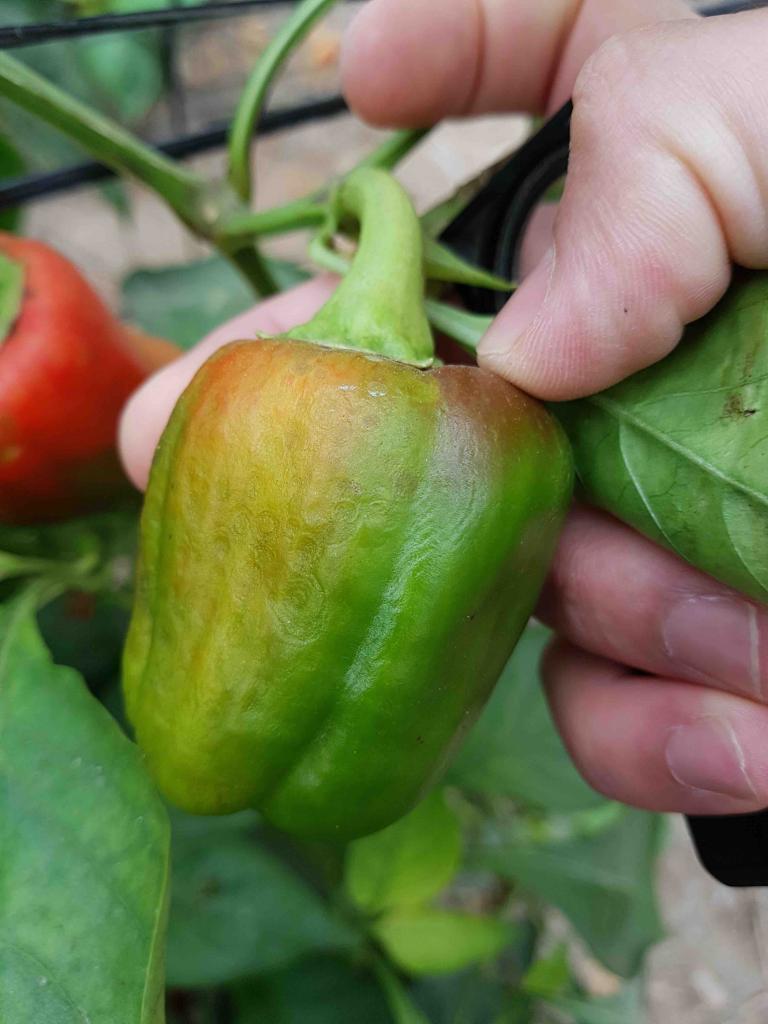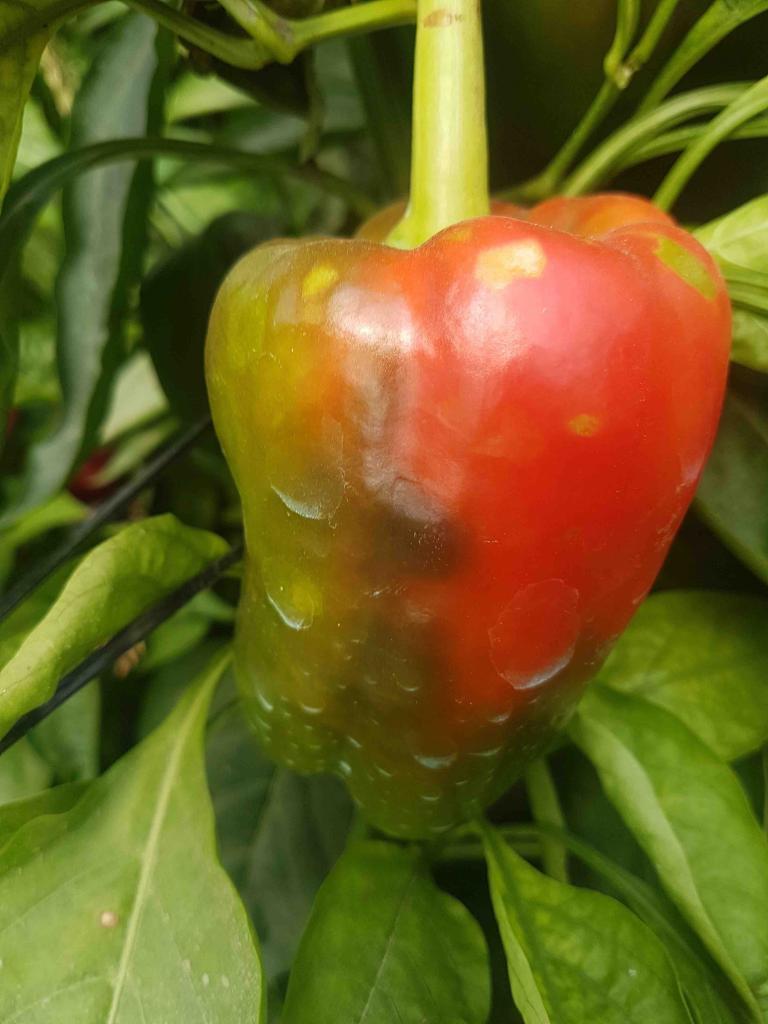தக்காளி புள்ளிவாடல் வைரஸ்
Tobacco, peanut, tomato, pepper, potato, eggplant, lettuce, endive, celery, bean, cowpea, spinach, cucumber, cauliflower, and many more
Tomato spotted wilt virus (TSWV) is from the tospoviruses genus and is common worldwide due to the spread of its main vector, the western flower thrips. The infection results in spotting and wilting of the infected crop, reduced yield, and in a later stage it will lead to death of the plant. Early symptoms show on the stems and leaves, while symptoms upon fruits appear at a later stage. Foliage and stems: appearance of circular stains of about 5.0 cm in diameter and quickly become necrosis. Fruits: round halo-like and sometimes spiral spots. When plant is fully infected then the leaves have all over chlorosis with formations of necrotic spots and delayed development.
The virus is transmitted by thrips (mainly the western flowers thrips), and it is not seedborne. There are a large number of hosts, such as weeds, that allow the virus to remain present even after the contaminated crop was harvested. This can cause the weeds to contaminate crops the following season and makes disease control difficult.
வைரஸ்களுக்குச் சிகிச்சைகள் எதுவும் இல்லை. பாதிக்கப்பட்ட தாவரங்களைக் குணப்படுத்த முடியாது; எனவே, வைரஸ் பரவுவதைத் தடுப்பதில் கவனம் செலுத்த வேண்டும். ஒரு சில தாவரங்கள் மட்டுமே பாதிக்கப்பட்டிருந்தால், தாவரங்களை வயலில் இருந்து அகற்ற வேண்டும்.
நோய்க்குத் தடுப்பாற்றலைக் கொண்ட தாவர வகைகள் மற்றும் விதைகளைப் பயன்படுத்துங்கள்.
உட்புறக் கட்டமைப்புகளை வளர்க்கவும்: கட்டமைப்பை மூடவும், மேலும் வலைகளில் துளைகள் ஏற்படாமல் பார்த்துக்கொள்ளவும்.
துப்புரவு: களைச்செடிகள், தாவரக் குப்பைகள், சேதமடைந்த பாகங்கள், தேவையற்ற தாவர வளர்ச்சி மற்றும் சாகுபடி செய்யப்படாத மற்றும் பாதுகாக்கப்படாத அருகிலுள்ள தாவரங்களை அகற்றுவதன் மூலம் பயிர்களுக்கு அருகாமையில் உள்ள பகுதிகளைச் சுத்தமாக வைத்துக்கொள்ளுங்கள்.
பூச்சிகளின் எண்ணிக்கையைக் கண்டறிய, பூச்சிக் கண்காணிப்பு நுட்பங்களைப் பயன்படுத்தவும் (பொறிகள் போன்றவை).
பூச்சிக்கொல்லிகளைக் கொண்டு இலைப்பேன்களை ஆற்றலுடன் நிர்வகிப்பது கடினமாகும். கரிமப்பாஸ்பேட்டுகள், கார்பமேட்கள் மற்றும் பைரெத்ராய்டுகள் பூச்சிக்கொல்லிகளைப் பயன்படுத்துவதைத் தவிர்க்க முயற்சி செய்யுங்கள். இந்த இரசாயனங்கள் இயற்கை எதிரிகள் மற்றும் மகரந்தச் சேர்க்கைகளை அகற்றி, பெரும்பாலான இலைப்பேன்களைப் பாதிக்காமல் விட்டுவிடும்.
ஸ்பினோசாட் -ஐ அடிப்படையாகக் கொண்ட தயாரிப்புகள்.
வணிக ரீதியாக கிடைக்கின்ற இயற்கையான இலைப்பேன் கொல்லிகள், ஓரியஸ் (“மிகச்சிறிய மலர் வண்டு”) உயிரினத்தைச் சார்ந்தவை.
*Names marked in red are considered to be highly poisonous to beneficial insects.
*Names marked in green are considered to be organic and IPM (integrated pest management) compatible.
Image Gallery


